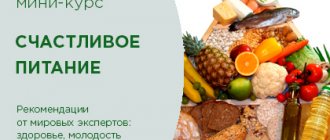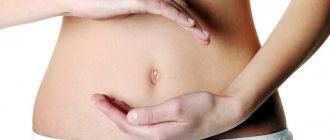How does a child's height and weight change from 6 to 12 months?
The average standard monthly increase in a baby's height is as follows:
– from the 6th to the 9th month – 1.5 – 2 cm (over the entire period – 4.5 – 6 cm);
– from the 9th to the 12th month – 1 – 1.5 cm (over the entire period – at least 3 cm).
The baby’s weight is now not growing so quickly: if from 1 to 6 months the child gained 600–800 g per month, now the monthly increase is 300–550 g—after all, the baby is now actively moving. By 12 months, the baby already weighs about three times more than at birth.
- To monitor your baby's weight, you need to weigh him once a month.
- If your baby, after introducing complementary foods, especially when he is bottle-fed, gains more weight than necessary, you should consult with your pediatrician to reconsider the baby’s diet. With excess weight, it will be more difficult for a child to roll over and move.
- Insufficient weight gain should not be ignored - this is also a reason to talk to your doctor. On the other hand, if the child begins to move actively, then the weight may “stop” for a while, there is nothing wrong with that.
Cooking and recipes
It is imperative to cook either with water or with the addition of olive oil . You should completely forget about fried food. It is best to cook vegetables in the microwave (this is how the most vitamins are preserved), or simmer in water. Of course, when cooking porridge, it is forbidden to add butter - only porridge cooked in water.
Distribute the permitted foods so that there is something new every day, and most importantly, there must be meat . Chicken fillet can be boiled with onions and carrots, with the addition of spices, and chicken liver can be stewed with carrots and water. Squid and shrimp are simply boiled in water for up to 5 minutes and they are ready to eat. You can add a drop of olive oil to vegetable salads several times a week.
When to visit a pediatrician
Traditionally, up to a year, the pediatrician should be visited every month. At 6 months the baby is examined by the following doctors:
- Pediatrician,
- Neurologist,
- Pediatric surgeon.
In addition, as a rule, a general analysis of blood, urine, and stool is done. Often the child is also examined by an ophthalmologist and an otolaryngologist to rule out hearing problems.
At one year of age, this medical examination is repeated, and the baby is also examined by a pediatric dentist and other specialists.
When and what vaccinations to do
- At 6 months, the baby is vaccinated again against whooping cough, tetanus and diphtheria (DPT vaccine), as well as polio and hepatitis B.
- At one year of age, the child is given the Mantoux test for the first time, which allows one to determine the level of immunity to tuberculosis, and is vaccinated against measles, rubella and mumps.
A visit to a doctor is useful not only for monitoring the child’s health - it is an opportunity for the mother to forget about worries and trust a specialist. Of course, your own experience and knowledge of your friends are important, but it is better to consult a doctor with all questions.
What does a child learn from 6 to 12 months?
At this age, the baby acquires new useful skills. His gross motor skills and muscles are actively developing. As a rule, he can sit without support and gradually learns to roll over, then crawl, and from 9 months he begins to take his first steps. Pediatricians believe that:
- There is no need to specifically plant the child ahead of time - until 6 - 7 months, the baby’s spine is not ready for this;
- It is better not to encourage your child to walk too early - the crawling stage is very important for strengthening muscles and preventing back problems;
- It is worth remembering that walkers and jumpers can (but are not at all necessary!) be used only after the baby has learned to sit and stand on his own
How to help your baby's physical development? From 6 months, the child begins to move more, and from this moment on, strengthening massage and then gymnastics become useful for him: this way you will help him prepare for his first steps (read more about this here). From 9 to 10 months you can take your baby to the pool, which also helps improve his health.
Vision and hearing are actively developing; by the 7th month, the baby has already developed color vision at the level of an adult and he sees distant objects better. At 7–10 months, the child can recognize geometric shapes (cube, pyramid, cone, ball), but his vision is still unclear.
The baby is actively developing speech, we write about this in a separate material, and you can learn about exercises that help the baby master this skill here. It is important to communicate a lot with your child at 6–8 months (and at any other period), since now he is acquiring the skills to understand short sentences and the meaning of words.
- At 8–9 months, the child imitates unfamiliar sounds and can speak double syllables. He reacts quickly if you ask him about his mom or dad or say his name.
- By 9 months, he already knows the names of the objects that are most important to him, can find them, and responds to adult requests (“give me”, “sit down”, etc.).
- By the age of one year, the baby already knows the meanings of about 10 words and may be able to pronounce half of them himself. He babbles a lot, and it is important for parents to encourage his speech, praise him and actively communicate in response.
We also advise you to get acquainted with general information about how the baby develops every month to a year.
Sports - what, how much, when
If you have no problems with obvious extra centimeters, first of all, I admire you. And secondly, don't read this. Do what you like - dancing, any exercise, yoga, swimming, aerobics, etc.
If you want to lose weight, tighten your overall skin turgor, get rid of cellulite and local fat deposits (“breeches,” a protruding belly), you need to love the gym, weight and pain. Smart training will help you lose weight and build muscle. Remember, muscles, like “lousy colleagues”, survive the nasty orange peel, taking its place #checked. I worked with a professional trainer for 1.5 months out of 6. First - consecutively, and then sporadically. The most important lesson is that you need to rely not on quantity, but on quality. The ideal workout is 3-4 hours per week. It didn't seem to you. Some 3-4 hours a week made me more confident, healthy and beautiful in just six months. Cardio is the beginning and end of the session, strength exercises are the main part of the program. I won’t go into detail, because everything is very individual. Trust the professionals and don't be afraid (like me) to build manly muscles. No special In addition, becoming a huge aunt is unrealistic, to my happiness. The question of training time is often raised. In my opinion, it's useless. An hour of exercise at any time of the day will be beneficial. Two minutes of abs is better than nothing. Three minutes of squats is infinitely great for the buttocks, so stop whining and making excuses. People often lie out loud about “no time to exercise” while chatting on the phone, watching TV, scrolling through FB, reading my blog, etc. After proper training, the hormone of happiness is released - you want to walk with long strides, smile and kiss. The last point should convince the most outspoken lazy people ;).
Social and emotional development
At 7 months, the child’s visual perception develops: he begins to notice elements of the environment, he is interested in the reflection in the mirror, he begins to understand that there is a connection between the reflection and his body.
At 6–8 months, children begin to express fear. This emotion develops later than the other basic ones, since in order to experience it, you need to learn to compare the event that causes fear at the moment with a similar event from the past. That is why now the child can compare the faces of loved ones and strangers and express fear of the latter.
Between 8 and 12 months, the baby knows which toys and people he likes best, he wants to be with them as often and as long as possible, seeing them as a source of emotional support. He also protests if his favorite toy is taken away or if his mother leaves him, even for one minute. Only by 18 months can he experience parting with her less painfully.
At the same age, the child more actively than before copies facial expressions, behavior and gestures of people, and learns to understand their meaning. Based on your reaction, he decides how to act: for example, if he sees approval, he comes up and takes the thing that interests him.
The baby tests adults' reactions to his behavior by throwing objects or performing other actions - in this way he learns about cause and effect and learns to interact with objects and people.
Food – beautiful, healthy and tasty
Any expert will say that eating habits are 50% of the result. If everything depended only on sports, I would advise exercising seven times a week. Fortunately, eating the right foods helps control those inches that people call “extra” and I call stupid. The first law of proper nutrition is refusal of any diets. Let's just say there are medical diets that doctors prescribe. For example, Diet No. 1 will be prescribed for stomach ulcers, Diet No. 11 for tuberculosis, and Diet No. 2 for gastritis. The only type of medical diet that is designed to control weight is Diet No. 8. It is prescribed in cases of obesity (in Latin obesitas - fullness, corpulence, fattening). The disease develops as a result of an imbalance between the absorption and expenditure of energy in the body. If you are obese (you can check this using the formula here), then you need to urgently consult a doctor who will prescribe a diet and a number of other aids. It is now clear that obesity is a disease, excess weight within the “normal range” is laziness. If you are sick, then diet is a necessity that will literally help you survive. A healthy person does not need it, because after 3-7-30 days he returns to the old way of eating, which means the kilograms lost during the period of restrictions return slowly or quickly. The best option is to eat beautiful, tasty and healthy food all your life. Your daily diet should include proteins, healthy fats and complex carbohydrates. In my case, this was exactly the case, so we can safely say that I ate and lost weight. Some trainers advise eating no more than 3 times a day, others say that the ideal diet consists of five small portions a day. My work schedule is quite hectic, so I can’t eat three times a day. I won’t lie, like many people, I like to chew something while running or at my desk. So I came up with my ideal formula: 3 main meals (normal sized portions) and two healthy but tasty snacks for me. It is advisable to have your main meals at the same time. Your body will get used to order and will not randomly ask for food whenever it pleases.
Serving size - basic rules:
- Most often we overeat, but this does not mean that we need to limit ourselves in the amount of food and constantly feel hungry. Correct nutritional culture is the absence of torment and suffering, but the presence of common sense;
- The volume of an empty stomach is 0.5 liters. Does our stomach ever feel very empty? Considering the snacks and all the drinks in between, I doubt it. The stomach can stretch up to 4 liters after eating, but this does not mean that people who are not alien to food culture need to do this. Our task is to eat a portion that does not change the size of the “king” of the digestive tract. This is approximately 400 ml of food - tea, coffee, juices (everything except water) - also needs to be counted, so think carefully about whether to eat more meat and salad or drink a huge cup of tea. The correct approach is not to drink food at all (or drink water). Counting has never been my strong point, but this is some easy math. Three meals are 1 kg 200 grams of food per day, plus healthy snacks (in my understanding of the word), plus tea, coffee, and sometimes juices/fresh juices. Is this like a diet or strict restrictions? In my opinion, no. The thing is that people eat and drink much more, which is why they fail to “get off the ground.” If you don't believe me, weigh the food and drinks you consume during the day. Not just once, but over 2 or 3 days. You will be shocked by the results;
- If you want visualization, let's take as a basis the favorite measure of many trainers and nutritionists. Eat no more than your fistful of complex carbohydrates (porridge) per meal, half a palmful of protein, and half a palmful of salad. If we are talking about the first one (soup, borscht, etc.), then remember about 400 ml, but also do not forget to take into account the eaten piece of whole grain bread.
What I completely excluded or minimized:
- Colored, sweet carbonated drinks and store-bought kvass (completely excluded);
- Sausages, balyki and frankfurters that are sold in stores (excluded by 90%, I only buy what is sold in the Eco-shop);
- Fatty pork (excluded 90% of it - during the healthy lifestyle I only ate it during the May holidays and when visiting my parents);
- Any chocolate except very dark (completely excluded);
- Butter (excluded by 90% - I only add it to baked goods that I spoil my loved ones with);
- Fresh juices and natural juices - someone thought that they promote weight loss, this is not true at all. One fresh juice contains many times more calories and fructose than one fruit. They should not be abused;
- Instant porridge (completely excluded). Healthy oatmeal is cooked in a saucepan rather than brewed in a cup;
- Honey (minimized). Many women who are losing weight exclude sweets from their diet, but eat jars of honey. This is a natural product, so it is many times healthier than sugar, but honey contains fructose, glucose and sucrase, which do not contribute to weight loss at all;
- Sugar (almost excluded). It is impossible to completely eliminate sugar from your diet (it is found in many vegetables, fruits and dairy products). First of all, I tried to eliminate useless sugar - I stopped adding it to places where it could not be added. For example, in lemonade, tea, coffee, compotes, cottage cheese casseroles, cheesecakes, pancakes, in some types of cookies and jam, you can definitely not add sugar without noticeable losses in taste;
- White and brown bread, buns (almost completely excluded) - this is my biggest “pain”, because I love delicious hot bread, pies with cherries, croissants... mmm, my favorite fried pies with eggs and onions. On this score, I simply agreed with myself - health and a beautiful figure outweighed. Sometimes, on holidays or weekends, I allow myself my favorite harmful foods - in small quantities and in the first half of the day;
- Chocolate bars, candies and cookies that are sold in the store (completely excluded). I sometimes eat small amounts of homemade cookies;
- Store-bought mayonnaise and ketchup (completely excluded).
- Store-bought dumplings and dumplings (completely excluded);
- Premium flour (partially excluded);
- Ice cream (minimized). If we talk about store-bought options, I ate fruit and berry (the most delicious Belarusian one is the White Birch brand) or pure ice cream. I completely eliminated ice cream with fruit additives (which I used to love). Plus, ice cream can be easily made at home.
- Nuts (almost excluded). They are definitely healthier than chips, but they are also very fatty. Is it true. You won't lose weight if you constantly chew nuts.
- Alcohol (minimized). Beer – almost completely excluded. I had never drank strong alcoholic drinks before, so I didn’t have to exclude them. Dry white wine has not left my life. Any alcohol should not be abused, but my article is not about that at all... Yes, I love dry white wine, it is the least alcoholic evil that I could afford once or twice a week. Friends, stop smiling. OK!!! Sometimes I drank more often.
What I included in my diet when I started taking care of my health and figure:
*This list can be almost endless, so I will only touch on the most important points.
- fiber (during this entire period I drank three types of fiber - flax, corn and sesame). I did it according to the following scheme: I drink twice a day for a month, take a month off;
- a lot of ordinary clean water - I definitely drink about 2 liters a day;
- foods that contain healthy fats, avocado and fish. Of course, I ate all this before, but now I buy avocado more often, and I try not only to bake fish, but also to salt it (I believe that a product that has not been subject to technical processing has more useful components). Once a month I make sure to buy 300-400 grams of the freshest red fish, which I salt;
- wholemeal flour. I really have discovered several wonderful brands of such flour and will only buy this from now on. I don’t think that it is completely harmless for the figure, but after studying a number of pseudo-scientific literature, I came to the conclusion that the most useful thing about wheat is the shell, which is mercilessly cleaned when making Premium flour. This is generally some kind of strange marketing ploy, which is still being carried out. Wholemeal flour is not a panacea and not a product that those losing weight can consume in large quantities, but it is better. In addition, I have tested all its capabilities - the dishes it produces are simply magnificent. Dough for dumplings made from such flour has a gray tint, but in my favorite dietary casserole it is not noticeable at all;
- pesto sauce. I have always loved it, but now it tops my list of favorites because it is the only sauce that can be found in the store in decent quality. Pesto has a low glycemic index, which means it is an excellent product for those watching their figure. Pesto goes perfectly with pasta, potatoes, rice, meat, vegetables and seafood. An excellent alternative to store-bought mayonnaise;
- oil - previously there was only sunflower and olive oil in my house, but six months ago I began to discover new tastes. Affordable, but no less healthy options are grape seed oil (I use it for baking), corn oil, flaxseed oil (it has a specific taste, you need to try it). There is also a more expensive, but also tasty, sesame one. My main “policy” is that you need to include different types of oils in your diet, because each has its own vitamins that our unique body needs.
Cognitive abilities
Until the baby is 8 months old, he believes that an object disappears if it is hidden or covered with something. Playing peek-a-boo with him now is pointless, because he will not be interested in the game. But from 8 to 12 months, the child understands that the object is in place constantly, and the game becomes fun and interesting for him.
- At 8 months, a child's memory begins to function differently. Previously, he simply recognized people when he saw them, but now he can remember the necessary objects himself. The baby begins to react emotionally if someone or something is not in the same place.
- At the age of 8 - 12 months, the baby understands that objects have names and functions. He is interested not in putting a toy in his mouth, but in pressing buttons. He imitates adults - he tries to drink from a cup, eat with a spoon and comb his hair.
The closer the baby's first birthday is, the more actively he experiments with objects, throwing them, shaking them, rolling them and throwing them. This behavior seems like just a game to adults, but at this moment the baby makes important discoveries, learning how the world and the objects in it work.
At 6–7 months, the baby begins to cut teeth, which you can learn about in detail here. This is the time to introduce complementary foods.
How to lose 30 kg in 6 months? Personal example Before and after photos
Every day there are more and more people who want to challenge themselves and achieve ideal forms. However, it is becoming increasingly difficult to sort through the sheer number of training variations. Therefore, we are pleased to introduce you to our new columnist - wellness trainer Andrey Semeshov
.
In the past, Andrey, a fellow journalist, transformed his body beyond recognition, and now helps others achieve success. In his future texts, he will become your guide through the intricate labyrinths of methods, systems and nutrition programs and will share the most effective life hacks that will help you transform externally and internally.
Photo: instagram.com/andreysemeshov
– Tell me how it all started. How did it happen that you moved from crime journalism to working as a coach and mentor?
– It started gradually, probably at the age of 25, when I needed to buy a new suit for work. I realized that I had to go to a store a la “Three Fat Men”. At that time I weighed much more than 100 kg with a height of 170 cm, so it was simply impossible to buy a suit in normal stores. Then I wondered where to take the money: either to the doctors or to the gym. I had never played any sport before, so I decided to take a chance and choose the second option. I bought my first subscription, but unfortunately, I wasn’t smart enough to immediately contact specialists. I spent 5-7 years on diets that were at the peak of fashion, made a lot of mistakes, and got a lot of injuries. In general, I've come a long way to understand how everything works.
One day I was wondering where to take the money: either to the doctors or to the gym.
In the end, I figured it out, because higher education gives you the opportunity to read books, be able to analyze and systematize information (laughs). And when I began to systematically approach the issue of losing weight, I identified what worked and realized that results can be achieved in six months. We are very lucky that in Russia there are strong methodologists who know how to motivate. I took a closer look at their practice, received specialized education and certification in the European coaching community, and eventually formed my own system. Then my acquaintances began to contact me and ask for advice, even those whose training experience was richer. And I realized that I like to consult, I like to understand. Thus, a certain program was gradually born, which is based on common sense, logic and physiology.
– Where do you suggest a person who has decided to achieve ideal forms should start?
- It's simple. Each of us has a smartphone with a program called a pedometer. See how much you walk per day. Most likely, it will be no more than 5-6 thousand steps. And the first thing I advise you to do is to bring the norm to 12 thousand steps daily. It's not as much as it seems. You will have to make an effort, but it will immediately give results, because about 300 calories will immediately go into the minus. This practice must be followed throughout your life, because our body is designed for movement.
It’s not for nothing that they say that physical inactivity is the scourge of our time. Moreover, I welcome calculations using a watch or phone, because we will not be able to walk “about” 12 thousand steps. There was a similar experiment on food: if a person was counting, he ate 2000 calories a day, and “by eye” added 300-500 calories on top. Steps are the simplest life hack; it does not require any extra effort or additional skills. But you have to walk in any weather.
In the rain, you have a choice: take an umbrella or put on a raincoat, but not a choice: to go or not to go. Then it will work.
– What comes first: nutrition or training?
- Unfortunately, food. This is 80% success. You can kill yourself in the gym five days a week, but if you don’t understand what and how much a person eats, the result will not be achieved. Everyone must have a control mechanism in place.
Photo: instagram.com/andreysemeshov
– What is psychologically more difficult: food restriction or regular physical activity?
– Who doesn’t like what more? There is a large percentage of people who think that they cannot live without sweets. Here I advise you not to eat it for one day. Yes, it will be a little uncomfortable, but everyone is experiencing this day freely.
Of course, the problem of overeating is the most important. We were created in conditions of limited resources. Our brain doesn’t know whether there will be food tomorrow, so once we’ve caught up with the mammoth, we have to eat everything at once. Plus, even in childhood, everyone is overfed, so correction of eating behavior is probably the most difficult stage.
Myths and truths about nutrition: should you count calories to lose weight?
– Do you have any tips or life hacks on how to change your eating habits? For example, some people advise taking pictures of everything you eat.
- Well, if someone wants to be surprised, they can take pictures and see at the end of the day how much they ate. But I insist that the most effective method is to count calories. I try to explain to people that it takes 5-7 minutes a day, and giving up 300 calories a day is not that difficult. There are many counting programs out there that are so automated that you don't have to do anything at all. Then you can go deeper and count the number of BJUs, this is again elementary. If a person is motivated, there will be no problems. I once worked with a very successful lawyer and we were in the counting phase. He even wore small weights to events, and no one laughed; on the contrary, they welcomed the fact that the man was taking care of himself.
Transformation. Kirill, 40 years old. Duration 8 months.
Photo: @Kirill
– Do you have a specific training plan, what and how much you need to do? Or is any physical activity better than nothing at first?
– First I ask people if they play sports. If they are already involved in, for example, volleyball, I do not convince them and say that this is wrong and they should definitely go to the gym. A person has found himself in some physical activity that he likes, and let him become better, bigger, stronger in it. But the majority are into sports. And then I explain that we have many muscles in our bodies, some of them are designed to move on four limbs. You can imagine that our body is a car in which the lion's share of parts are not used at all; it will begin to rust and deteriorate. Therefore, I propose to load these parts, albeit artificially. Fortunately, a lot of interesting research has recently emerged that talks about how our body works and how it affects muscles and fat tissue. And now it is already possible with greater justification to appeal to such concepts as the volume of load, how many approaches to perform and how much rest between them.
The coach answers: how to become a muscleman without leaving home?
– What should be the frequency of training?
– The main answer is adequate. You can train six days a week for 30 minutes, and it will be effective, or you can train two days a week for an hour, and it will be no worse. If we take the research results, then from the point of view of muscle hypertrophy, it is better to load the muscles twice a week. But this is again a fact, and you can build a training program any way you like. If a person can walk twice, we do one program, if five times, we do another, the main thing is to calculate it so that the body has time to recover. Exercising 2 to 4 times a week is great.
– They say that at the initial stage after training you want to eat even more. How to deal with this?
- Yes, this is a known problem. The man worked out, spent 400 calories in 1.5 hours, and then went and rewarded himself with a thousand. It turns out that the result of the training was doubled. How to get out of the situation? You can move all the food until the evening, nothing bad will happen, but in the morning you can deprive yourself a little. The main thing is to maintain daily balance.
Transformation: Alexander, 39 years old. Duration 6 months.
Photo: @texas
– By the way, when is it more effective to train: in the morning or in the evening?
– Individually, it depends on how the body is configured. As a general rule, most people have peak performance around 3-4 pm. But if there is an option to exercise only at 6 am, the body will get used to it. The main thing is to study.
Morning, evening or night: when is it most effective to exercise?
Personal experience: how to lose 30 kg and get in shape?
– How long does it take to see the first result?
– I ask people to weigh themselves and measure their waist once a week. And if they systematically implement all the points of my simple program, they see the result every week. If we talk about changes, when a person saw and gasped, it will take at least a month. There is no fairy tale, you need to take it and do it.
We introduce complementary foods
The appearance of new products in his diet actively promotes the health and development of the child. According to WHO recommendations, complementary feeding should be introduced from 6 months. In an earlier period, as a rule, the child’s gastrointestinal tract is not ready for such changes in the menu, but this should not be delayed too much. In six months, a growing body requires a lot of vitamins and microelements, and milk alone is not enough for a baby.
Read more about complementary feeding here and be sure to consult your pediatrician. Here we will formulate the basic principles of introducing complementary foods.
At 4–6 months, vegetable puree or gluten-free, dairy-free porridge is introduced.
Experts do not recommend introducing fruits and juices first. If you start with fruit purees, your baby will get used to the sweet taste and may later refuse “less appetizing” vegetables.
The second complementary food is introduced 3 - 4 weeks after the first, and after another 3 - 4 - the third.
Possible options for the sequence of introducing three main products: porridge - vegetables - meat, porridge - meat - vegetables, vegetables - porridge - meat, vegetables - meat - porridge.
Any complementary feeding should not replace breastfeeding; it only supplements the child’s diet.
By 8–9 months, it is advisable to introduce at least 3 feedings of thick food in a total volume of 400–600 g into the baby’s diet.
At the same time, kefir and yogurt are included in the child’s diet: start with a teaspoon, gradually increasing the amount to one tablespoon per day. After 7 - 10 days, the daily volume of kefir or yogurt should be about 40 - 50 ml, and in 3 weeks it is increased to 200 ml.
At 8–9 months, the child is also offered cottage cheese: first, half a teaspoon per day, then the daily dosage is increased to 20 g, then to 30–35 g. By 1 year, the amount of cottage cheese in the child’s diet is up to 50 g per day (this 5 – 8 teaspoons).
At 9 - 10 months, you can introduce low-fat fish - pollock, hake. Fish replaces meat puree, and should be given 1-2 times a week.
At 11 months, the little gourmet is ready to try vegetables that are more difficult to digest: eggplant, beets, white cabbage, green peas. Vegetables are still served in heat-treated form.
At 12 months, your baby can try other foods. But remember that a child’s body needs children’s food, and we tell you why in this material.
Eating time
Develop the most convenient meal schedule for yourself. But you definitely need to eat 3 times a day, with a small fruit snack. It is advisable to have breakfast before 9 o’clock; have lunch until 14; have dinner until 20 o'clock. The rule “not to eat after 18:00” is inherently stupid and should not be followed. The most important thing is to eat food 3-4 hours before bedtime - this improves digestion. Also, you just need to add the most important detail to your schedule - water. Considering its specific features, which are important for digestion, it should be consumed 20-30 minutes before the main meal, and no earlier than 20 minutes after meals (including tea and other liquids).
Portions. Of course, in the first weeks it will be quite difficult to limit yourself so sharply, but fasting days will help. Reduce your portions by at least 70%; the food on your plate should be the same size as standard portions in expensive restaurants. I think there is no need to remind you that these portions need to be consumed as long as possible - distract yourself with conversation at the table, or, in extreme cases, watch TV. The standard for eating food is from 15 minutes, if you stretch out the meal for the entire 20 minutes, then there will be no problems at all with a feeling of fullness.











